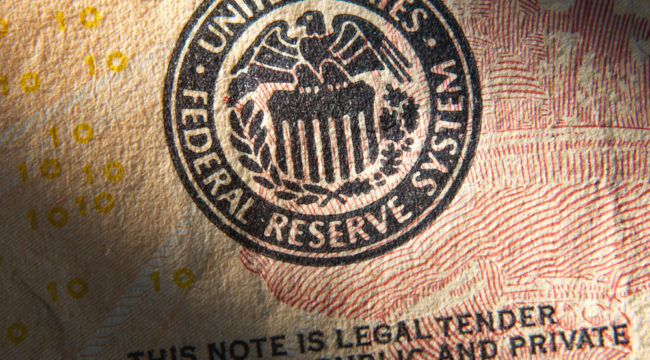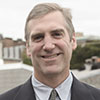“Hell Is Truth Seen too Late”
Today Trump reminded markets that truce is not peace.
“Remember, I am a Tariff Man,” the president huffed this morning.
Meantime, Trump’s senior economic adviser Larry Kudlow acknowledged that a trade deal with China “may not get done.”
If the 90-day truce fails, expect the swords to leap from their scabbards… and the cannons to be readied.
Trump may impose 25% tariffs on all Chinese goods — if he is good to his word.
Chinese retaliation would likely be swift… and harsh.
Today’s dispatches terrified the stock market, just one day after it thrilled to this weekend’s truce.
The Dow Jones collapsed 799 ghastly points today.
The S&P sank 90. The trade-sensitive Nasdaq took a 283-point lacing.
Details tomorrow.
Meantime, the “Open Market” Committee of the Federal Reserve is preparing to raise interest rates in two weeks.
We have presented the case that this hike could cross the “neutral” rate of interest.
In reminder, once rates cross the neutral rate they begin to pull on the economy.
They no longer stimulate, that is. Nor are they neutral.
They drag.
Something generally gives way six–12 months after rates cross the neutral zone.
On Oct. 3 Jerome Powell said, “We are a long way from neutral at this point.”
But now jump ahead to Nov. 28…
Not two months after announcing rates are “a long way” from neutral, Mr. Powell informed us that rates were “just below” neutral.
Why the change?
Has the Federal Reserve chairman been reading The Daily Reckoning?
If Powell presses ahead with the rate hike, we must conclude he is willing to play a dangerous game of chance.
But why would he risk walking into trouble?
(Jim Rickards provides the answer below.)
The Fed’s target rate would rise to 2.5% — if Powell sets the roulette wheel spinning in two weeks.
But has the Fed already crossed a dangerous line that nearly guarantees recession?
Let us step into the “shadows” for a possible answer…
The Federal Reserve hounded the fed funds rate (now 2.25%) all the way to zero post-financial crisis.
But conventional analysis of interest rate policy begins to fail at the zero bound.
Thus interest rates entered a twilight zone where familiar reference points faded… and finally fell away.
But economists Jing Cynthia Wu and Fan Dora Xia were determined to penetrate the darkness at zero and below.
So they set to work upon an “alternate” fed funds rate that more faithfully mirrored monetary conditions.
In 2014 the “shadow rate” was born.
As one observer explains it:
When the federal funds rate hovers near zero, many economic models stop working. Researchers developed a “shadow rate” that can stand in for the fed funds rate, drop into negative territory and make those models functional again.
Three rounds of quantitative easing darkened the shadow rate to minus 3% by mid-2014.
But the shadow rate began a steep rise in late 2014 — over one full year before Janet Yellen raised the actual fed funds rate in December 2015.
Why did the shadow rate rise so steeply one year before the official rate?
Two reasons:
The Fed announced the end of quantitative easing in late 2014.
And Janet Yellen began jawboning rates higher with “forward guidance.”
Thus financial conditions began to bite… and the shadow rate began its rise.
If we therefore consider the shadow rate, the Fed began tightening not in 2015… but in 2014.
So what, you say?
It means the current tightening cycle may be far more mature — and intense — than recognized.
The Fed has undertaken 12 tightening cycles since 1955.
Each has averaged two years.
The present cycle is three years old.
But if we account for the shadow rate… the current cycle is 4.5 years old.
Meantime, previous tightening cycles traveled roughly 3 percentage points, trough to peak.
The current cycle has covered the first 2.25.
But consider the shadow rate…
Recall that it bottomed at negative 3% in 2014.
Like the official rate, it now rests between 2% and 2.25%.
It is therefore 5 full percentage points off its 2014 low — far exceeding the historical average.
The following chart reveals that on each occasion tightening approached 5 percentage points… recession was close by.

Société Générale market strategist Albert Edwards:
It is therefore reasonable to argue that the U.S. has already faced a “normal” tightening cycle and any additional rate hikes are taking us into territory not seen in recent times. This already may be enough for the Fed to have broken something.
The shadow rate says the Fed has already tightened too much — regardless of what transpires in two weeks.
Thus Jerome Powell may one day choke on the grim words of Thomas Hobbes:
“Hell is truth seen too late.”
Regards,
Brian Maher
Managing editor, The Daily Reckoning



Comments: